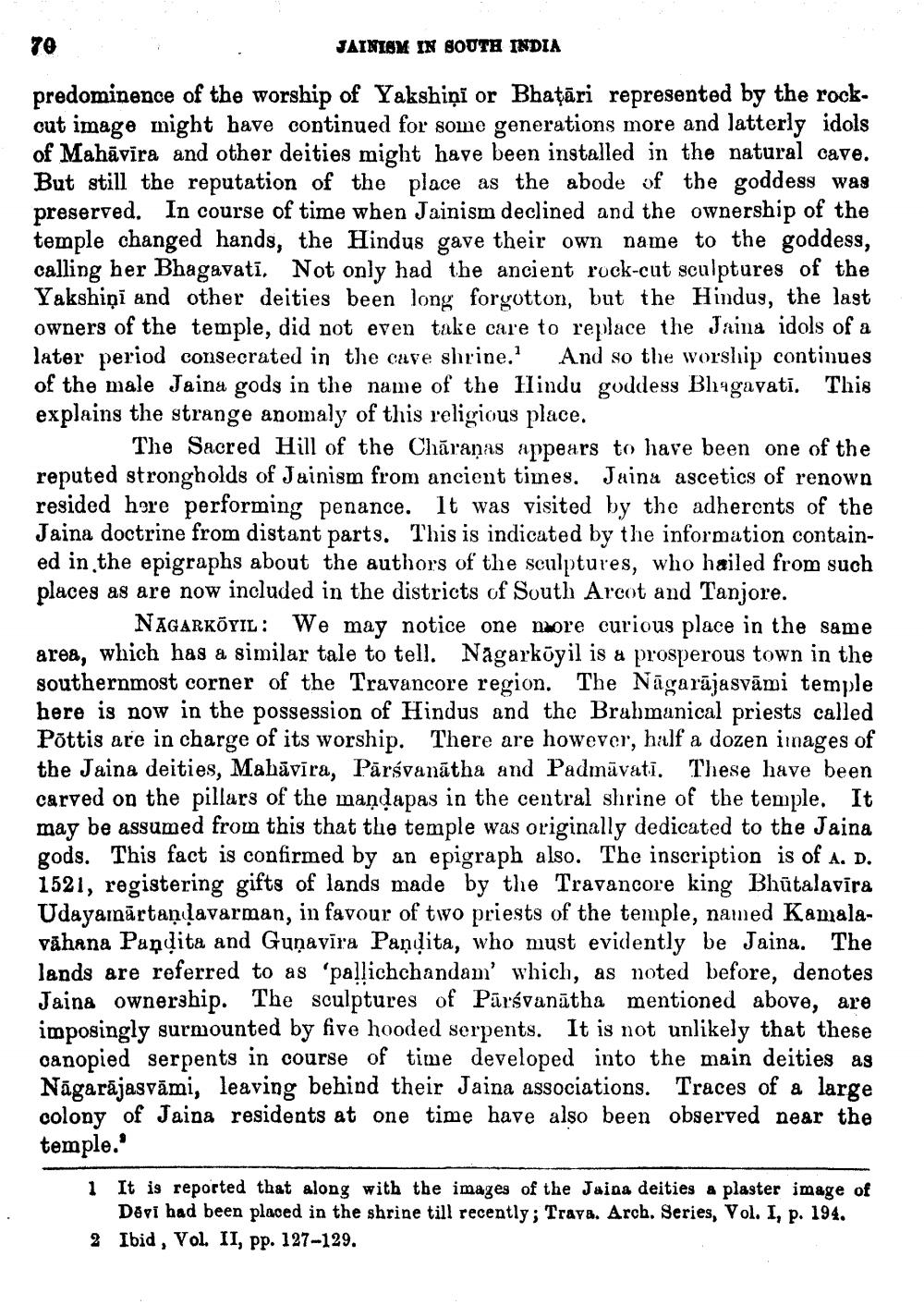________________
70
JAINISM IN SOUTH INDIA
predominence of the worship of Yakshini or Bhaṭāri represented by the rockcut image might have continued for some generations more and latterly idols of Mahavira and other deities might have been installed in the natural cave. But still the reputation of the place as the abode of the goddess was preserved. In course of time when Jainism declined and the ownership of the temple changed hands, the Hindus gave their own name to the goddess, calling her Bhagavati. Not only had the ancient rock-cut sculptures of the Yakshini and other deities been long forgotton, but the Hindus, the last owners of the temple, did not even take care to replace the Jaina idols of a later period consecrated in the cave shrine.1 And so the worship continues of the male Jaina gods in the name of the Hindu goddess Bhagavati. This explains the strange anomaly of this religious place.
The Sacred Hill of the Charaņas appears to have been one of the reputed strongholds of Jainism from ancient times. Jaina ascetics of renown resided here performing penance. It was visited by the adherents of the Jaina doctrine from distant parts. This is indicated by the information contained in the epigraphs about the authors of the sculptures, who hailed from such places as are now included in the districts of South Arcot and Tanjore.
NAGARKÖYIL: We may notice one more curious place in the same area, which has a similar tale to tell. Nagarkōyil is a prosperous town in the southernmost corner of the Travancore region. The Nagarajasvami temple here is now in the possession of Hindus and the Brahmanical priests called Põttis are in charge of its worship. There are however, half a dozen images of the Jaina deities, Mahāvīra, Parsvanatha and Padmavati. These have been carved on the pillars of the mandapas in the central shrine of the temple. It may be assumed from this that the temple was originally dedicated to the Jaina gods. This fact is confirmed by an epigraph also. The inscription is of a. D. 1521, registering gifts of lands made by the Travancore king Bhutalavīra Udayamartandavarman, in favour of two priests of the temple, named Kamalavāhana Paṇḍita and Guņavira Pandita, who must evidently be Jaina. The lands are referred to as 'pallichchandam' which, as noted before, denotes Jaina ownership. The sculptures of Parsvanatha mentioned above, are imposingly surmounted by five hooded serpents. It is not unlikely that these canopied serpents in course of time developed into the main deities as Nagarajasvāmi, leaving behind their Jaina associations. Traces of a large colony of Jaina residents at one time have also been observed near the temple.'
1 It is reported that along with the images of the Jaina deities a plaster image of Devi had been placed in the shrine till recently; Trava. Arch. Series, Vol. I, p. 194. 2 Ibid, Vol. II, pp. 127-129.




